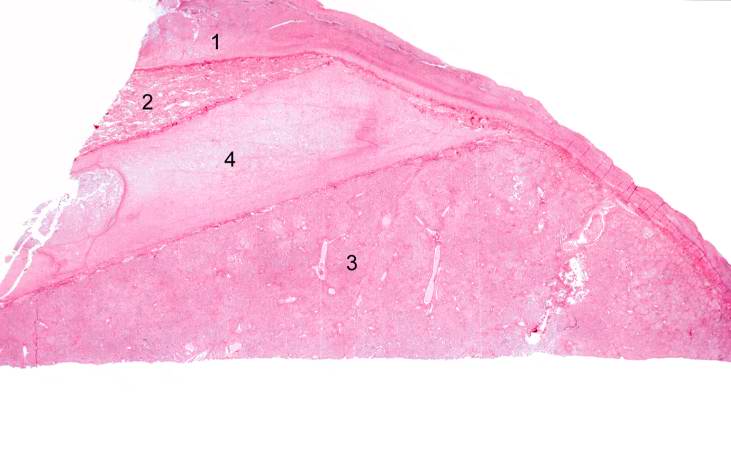File:IPLab3LobarPneumonia4.jpg
This low-power photomicrograph of the lung shows: (1) markedly thickened pleura, indicating an inflammatory process which has been present for several days; (2) a small wedge-shaped segment of normal lung which is somewhat compressed due to artifact; (3) a large wedge-shaped segment of lung tissue with lobar pneumonia, which appears very dense due to extensive cellular infiltrate; and (4) a greatly thickened pleural space between these two lung lobes. This interlobar space is markedly thickened due to deposition of fibrinous exudate.
In alcoholics, aspiration pneumonia is common--bacteria enter the lung via aspiration of gastric contents.
An infiltrate is an accumulation of cells in the lung parenchyma--this is a sign of pneumonia.
File history
Click on a date/time to view the file as it appeared at that time.
| Date/Time | Thumbnail | Dimensions | User | Comment | |
|---|---|---|---|---|---|
| current | 03:17, 19 August 2013 |  | 731 × 450 (31 KB) | Seung Park (talk | contribs) | This low-power photomicrograph of the lung shows: (1) markedly thickened pleura, indicating an inflammatory process which has been present for several days; (2) a small wedge-shaped segment of normal lung which is somewhat compressed due to artifact; (... |
- You cannot overwrite this file.
File usage
The following page links to this file:
